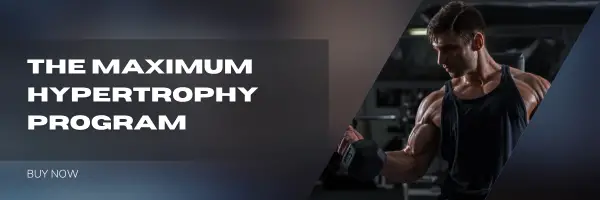Unraveling the Cardio and Muscle Hypertrophy Conundrum
In the quest for muscle hypertrophy, the role of cardio exercises often emerges as a contentious topic. This blog post delves into the nuanced relationship between cardiovascular activities and muscle building, aiming to provide clarity on how to optimize your fitness routine for the best results.
The Cardio and Hypertrophy Debate
Cardiovascular exercises, commonly referred to as cardio, encompass any activity that increases your heart rate, enhancing the efficiency of your heart and lungs. While the primary goal for many is to achieve muscle hypertrophy—increasing muscle size and density—the interaction between cardio and muscle gains presents a complex puzzle.
The Caloric Surplus Necessity for Hypertrophy
To attain muscle hypertrophy, maintaining a caloric surplus is essential; your body needs more calories than it burns. However, cardio exercises, by their very nature, burn calories. This leads to a critical question: Can the caloric deficit induced by cardio interfere with the caloric surplus required for muscle growth? The answer is nuanced. While cardio does expend calories, which could potentially affect your caloric balance, its impact on muscle hypertrophy depends on several factors, including the intensity and timing of cardio workouts.
Advanced Athletes and Cardio Considerations
Research indicates that the more advanced an athlete becomes, the more cardio may potentially hinder muscle gains. This is because achieving hypertrophy becomes increasingly challenging as one progresses, making every calorie and every bit of energy crucial.
The Surprising Benefits of Cardio for Muscle Hypertrophy
Despite the concerns, cardio can be beneficial for muscle growth in various ways. Regular cardiovascular activity can enhance fat utilization, improve metabolic health, and even increase muscle recovery by promoting blood flow. The key is to balance cardio with adequate nutrition to compensate for the expended calories, ensuring the body remains in a caloric surplus conducive to muscle growth.
Optimizing Cardio for Muscle Gains
The Best Time for Cardio
Determining the optimal time for cardio exercises in relation to strength training sessions is pivotal. Engaging in cardio post-strength training or at a separate time altogether can minimize its potential impact on muscle hypertrophy. This approach allows for focused energy expenditure on muscle building during strength training and utilizes cardio to enhance overall fitness without compromising muscle gains.
Intensity Matters
The intensity of your cardio sessions can also play a significant role. Low to moderate-intensity cardio may offer a sweet spot, enabling fat loss while preserving muscle mass. High-intensity cardio, on the other hand, though more time-efficient for fat burning, requires careful integration into your training regimen to avoid excessive fatigue that could detract from muscle-building workouts.
Listening to Your Body
Ultimately, the most effective cardio exercise is one that you can consistently perform and enjoy. Whether it’s walking, running, cycling, or rowing, the choice should align with your personal preferences, fitness goals, and lifestyle. Consistency, rather than the specific type of cardio, is key to achieving and maintaining optimal fitness levels.
Conclusion: Finding Your Balance
The relationship between cardio and muscle hypertrophy is not one-size-fits-all. It requires a personalized approach, taking into account your fitness level, goals, and how your body responds to different types of exercises. By carefully balancing cardio with strength training and ensuring a nutritional strategy that supports a caloric surplus, you can achieve the muscle gains you desire while reaping the cardiovascular benefits that cardio offers. Remember, fitness is a journey, not a destination, and finding what works best for you is part of the process.



